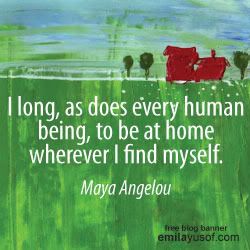
Jim said...
I finally got around to reading your book, remember me, something I've been meaning to do for awhile. One question, why did you kill of your main character?
This is a great question, Jim, thanks for asking it. The Mary Margaret character in Remember Me died for reasons intrinsic to both the story of Remember Me and to the larger story of my trilogy of novels. Each of my three novels examines love and loss from different viewpoints, and all three together examine love, life and death, as they fundamentally effect our experience.
Because Remember Me was written as a plea for reform in US family courts, it was important for the main character to die because each year, thousands of people take their own lives or have their lives taken as a result of the ineptitude of the US family court system. To research my book, I spent countless hours in family court, listening to these stories and interviewing litigants. There is an overwhelming feeling of hopelessness in domestic violence cases because weak laws, inexperienced State's Attorneys, and burned out judges allow cases to go unresolved or perpetrators to go free, empowered to continue the violence. The death of this character and destruction of this family was a common story in US family court.
Looking at the larger canvas of the trilogy, on the journey of the spirit, the death of the ego is the first step to be taken toward enlightenment. Some say, for instance, that the Tibetan Book of the Dead is actually a manual for ego death. The Mary Margaret character in Remember Me never catches on to this process as she cannot let go of her egotistical concerns, and suffers her losses, defining herself with loss and pain. Because this is a dead end for a journey of the spirit, her death frees her spirit to begin again.
In the second novel, Chasing Twilight, the character is resurrected, and begins to understand the importance of ego death and resurrection of being – or consciousness raising. So, her journey can continue and the concept of death takes on new meaning. With death, comes rebirth and the cycle of life is felt in the soul.
This will bring up interesting questions in the third novel, Shadow Dancing: What is death? What parts of us die while we live? How is this integral to being and becoming?
I sincerely hope you enjoy the stories and the concepts. Thanks again.
Artwork by Moira Marshall Many thanks.
 Mia said...
Mia said...





























I like this post. How do you think of the things you write? Where do you get your inspiration?